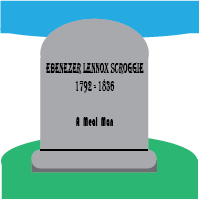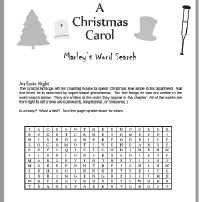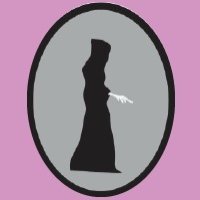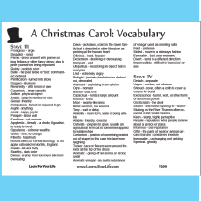Christmas Carol Facts
A Christmas Carol: Fun facts, questions, and history behind Charles Dicken's most famous taleWas There a Real Ebenezer Scrooge?
Ebenezer Lennox Scroggie
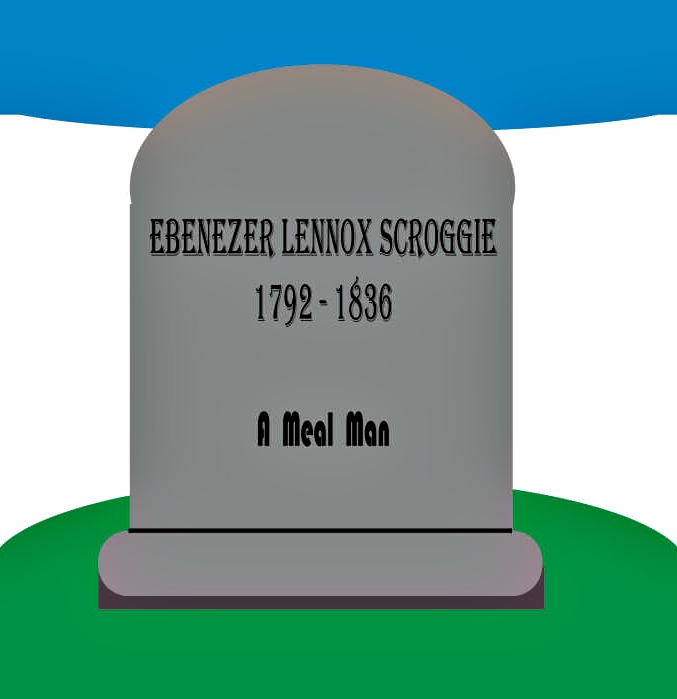
Charles Dickens wrote in his diary that two years before he wrote A Christmas Carol in 1843, he was walking through a church graveyard in Edinburgh, Scotland and saw the inscription above of a man five years deceased. He thought it said, “Ebenezer Lennox Scroggie: A Mean Man” though it actually said “A Meal Man” (the gentleman below the stone had been a corn or meal merchant.)
Unaware of his mistake, he pondered the life of a person whose gravestone described him as mean and wrote “to be remembered through eternity only for being mean seemed the greatest testament to a life wasted.”
His contemplation led him to change the last name to Scrooge and develop the unlikeable character in our story. The cemetery and gravestone were destroyed in 1932; but not until history discovered Dicken’s error. The real Ebenezer was apparently a generous man. Nonetheless, Dicken’s tale knocked Ebenezer’s first name out of the list of the top baby names for the next two hundred years.
Bill of Exchange
First of Exchange Pay to Mr. Ebenezer Scrooge
This quote below refers to Scrooge’s relief when he realized a full day had NOT gone by while he was sleeping. It still stumps some students, so lets decipher what it means:This was a great relief, because “three days after sight of this First of Exchange pay to Mr. Ebenezer Scrooge or his orders,” and so forth, would have become a mere United States security if there were no days to count by.
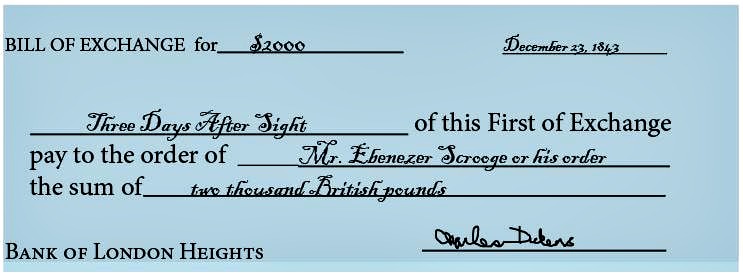
A Bill of Exchange is somewhat like a check but was used in international trade. Exchanges could be made several times, and each time it was exchanged it was worth less than before.
Looking at the handwritten bill above for £2000 (we really don’t know how much it was for) we see that the exchange specified it must be cashed in three days after first sight or it would become a second exchange. Then it would have been worth less money.
How much less? Well, using his usual British humor he stated it would be “a mere United States security” - indicating he didn’t think the bonds put out by the American government were worth much. (There was a financial crisis in America at the time.)
The real take away message of this statement is that even when Scrooge is worried about the possibility the sun may have quit shining, Scrooge is still thinking about:
Answer: Money.
Belle's Mourning Dress
Mourning Dress vs Morning Dress
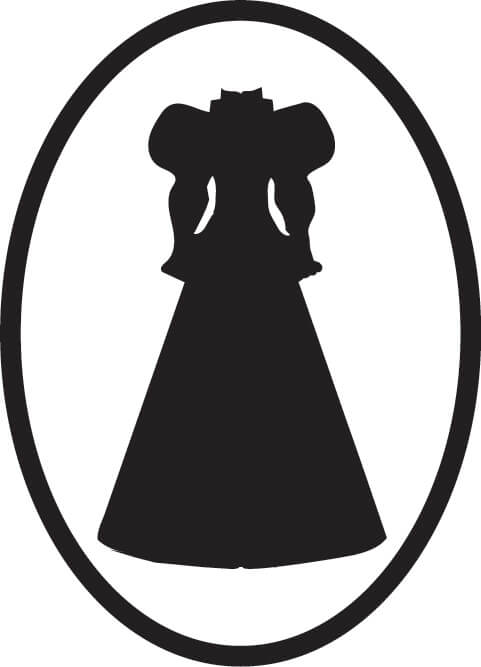 Morning dress is formal attire worn during the daytime. While the rules of morning dress differed from that of evening gowns, they were as elaborate and expensive. Rules still exist today for formal "morning dress," but it was a bigger "thing" back then.
Morning dress is formal attire worn during the daytime. While the rules of morning dress differed from that of evening gowns, they were as elaborate and expensive. Rules still exist today for formal "morning dress," but it was a bigger "thing" back then.On the other hand, mourning dress usually refers to the clothes worn by a person who has lost a family member. In the Victorian era there were guidelines on such dresses which were usually black and ornate.
Both morning dress and mourning dress are expensive and fancy, so Belle was not poorly dressed either way. But many have wondered if Dickens was using an archaic spelling for mourning, or was Belle actually in mourning for a father who left her without money? (She stated she is dowerless which means either her father is poor or is dead.) If her parents death had recently changed her financial prospects, we would expect that would have been mentioned.
How Much Did Bob Crachit Make?
15 Shillings in Old British Money
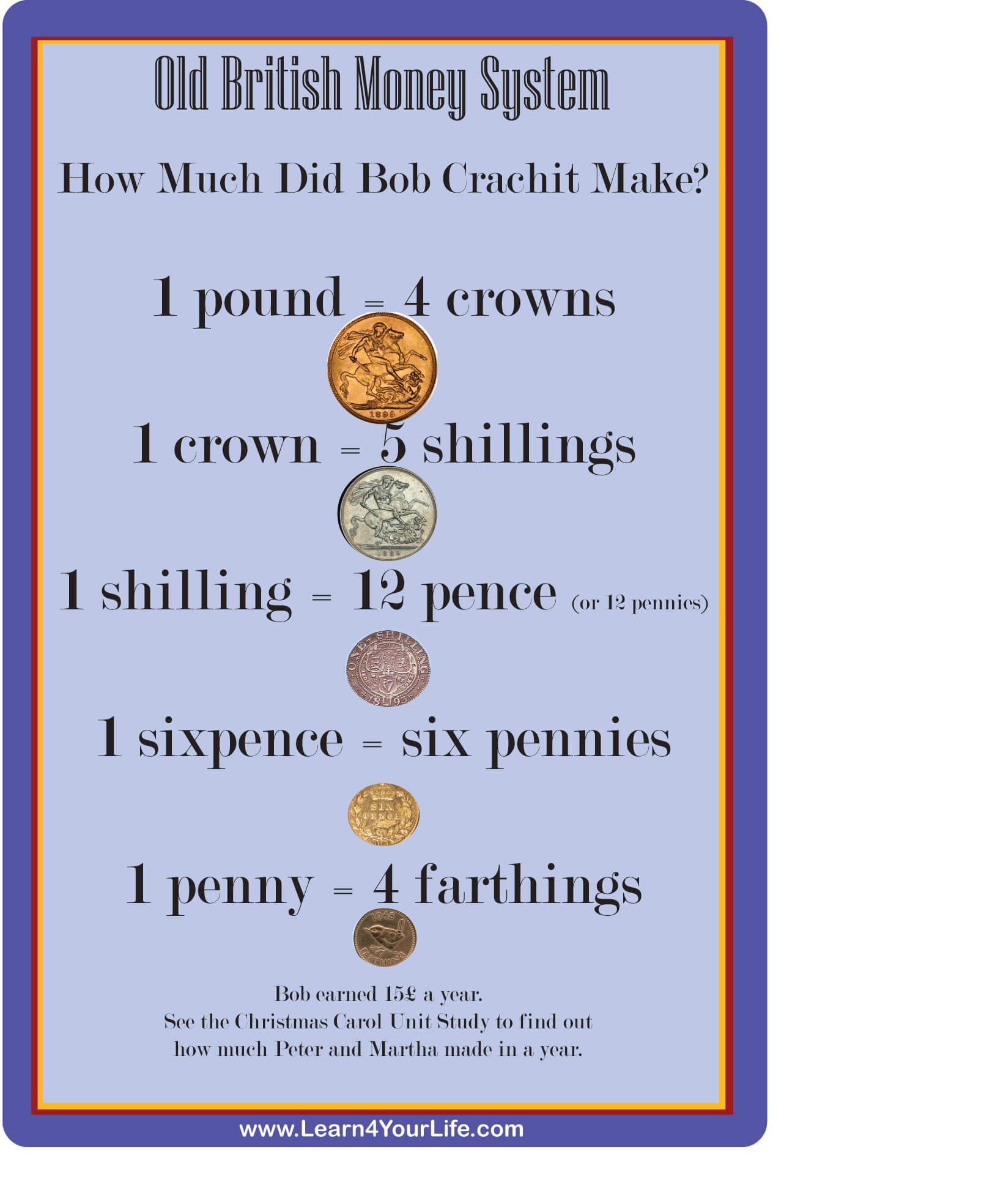 So how much did Bob Cr
achit make on "15 bob a week?"
So how much did Bob Cr
achit make on "15 bob a week?"A bob was slang for one shilling. (We might call one dollar a "buck" in the same way.)
Dickens used that as a pun since it was also Bob's first name.
There are twenty shillings in a pound, so Bob made three quarters of a pound a week or about 37 pounds a year. Common laborers made 20 pounds a year, so it wasn’t that bad of an income. Nor was it generous since a clerk was a skilled workman. Of course, six kids made his needs greater.
How much would Peter earn at “five-and-sixpence” weekly? (That means five shillings and one sixpence.)
The math works out to a little over 14 pounds a year; about what one might expect for an unskilled youngster just starting in the workplace.
How much did Martha earn?
Nothing. She was a millner's apprentice and earned no income. However, once she completed her apprenticeship she would have a marketable skill and could open her own shop.
Ghost of Christmas Yet To Come
Ghost of Christmas Past Vs. The Grim Reaper?
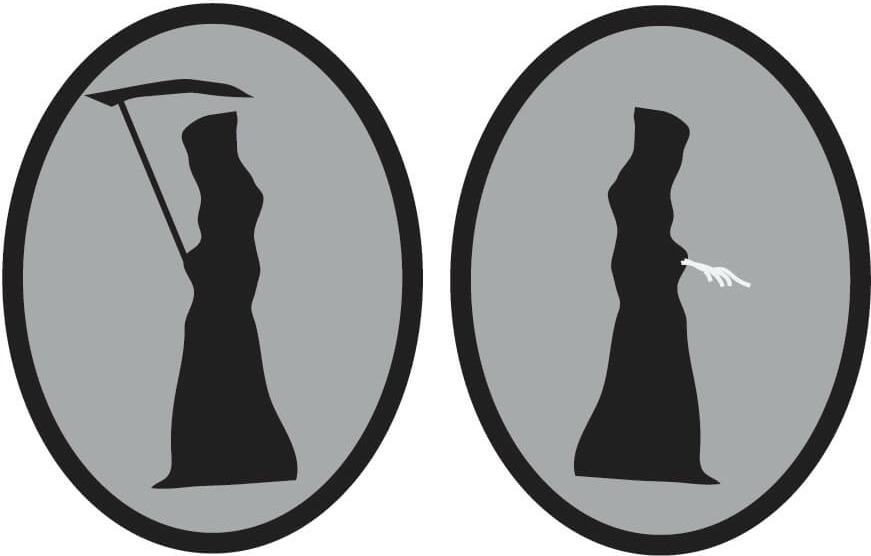
Other examples of reaper-like characters include the ring wraiths in Lord of the Rings, fourth angel of the apocalypse in Revelation, other images are seen in cartoons, Halloween costumes, or video games.
Personification
Personfication is an abstract concept represented by a person.The Grim Reaper is the personification of death. He is usually seen with a scythe representing his act of "harvesting" the souls of people on earth.
The Ghost of Christmas Yet To Come personifies the future, not death. The Ghost of Christmas past personified the Christmas' of Scrooges past. The Ghost of Christmas Present personified Christmas Day.
The Ghost of Christmas Yet to Come is not seen with a scythe but instead with his own bony hand pointing out from beneath his black shroud. This skeleton foreshadows death for Scrooge, but not for others.
So based on the fact that our Christmas spook isn't slinging a scythe over his robe and personifies something else, I think its safe to say he is probably is NOT the Grim Reaper per se. Nonetheless, I still wouldn't want to meet either of them in a dark alley.
What Is A Beetling Shop?
Far in this den of infamous resort, there was a low-browed, beetling shop
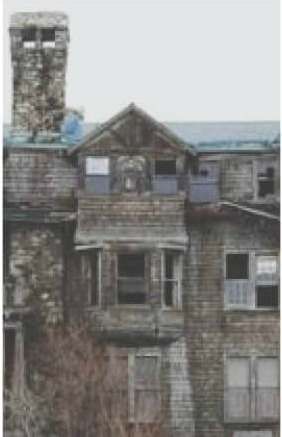 A beetling shop is a place where rags and old clothes were beaten to create new linens for poorer people. A low-browed beetling shop would be one with a low doorway requiring one to stoop to get into. Not the most inviting place to enter. But let’s take a look inside.
A beetling shop is a place where rags and old clothes were beaten to create new linens for poorer people. A low-browed beetling shop would be one with a low doorway requiring one to stoop to get into. Not the most inviting place to enter. But let’s take a look inside.
...where iron, old rags, bottles, bones, and greasy offal were bought.
The word “offal” is pronounced like “awful.” It refers to the parts of animals that were not edible, like bones, hooves, eyeballs. We could say the place was scattered with “awful offal.” Seriously, this is pretty bad stuff when you consider how long before it is going to start smelling; not to mention attracting rats.
So who is going to buy offal? The poorest of the poor might not get any other form of meat or food at all.
Total Abstinence Principle
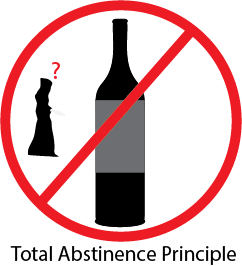 Teatotalers were those who were completely against any form of alcoholic beverage. Abstinence means to abstain or not use or participate in something. The "total abstinence principle" was used by the teatotalers to say one should not drink any wine or spirits at all. Obviously, Dickens did not prescribe to this system as he just had Scrooge offering smoking bishop, which was a Christmas drink with wine in it.
Teatotalers were those who were completely against any form of alcoholic beverage. Abstinence means to abstain or not use or participate in something. The "total abstinence principle" was used by the teatotalers to say one should not drink any wine or spirits at all. Obviously, Dickens did not prescribe to this system as he just had Scrooge offering smoking bishop, which was a Christmas drink with wine in it.Dickens did write at the beginning of the last paragraph of the book that “he (Scrooge) had no further intercourse with spirits.” This meant that he no longer talked to spirits or ghosts. The story is not trying to promote dealings with the occult, and the visits of the spirits were something that happened only the one night of Scrooge's life.
Since ghosts and alcoholic beverages can be called “spirits,” this indicates that Dickens used “the total abstinence principle” as:
Answer: Pun
History of "A Christmas Carol"
Why did Charles Dickens write his famous Christmas tale
By the time the 31 year old Dickens penned "hum bug" from the mouth of the miserly Scrooge in 1843, he had already written successful novels. These included The Pickwick Papers in 1837, then Oliver Twist in 1838; followed by Nicholas Nickleby in 1839.Dickens was a social reformer. Having suffered an impoverished childhood himself, he was interested in improving the lives of children that were being destroyed by the impact of urbanization. He was interviewing young factory workers, like Martha Cratchit who worked sixteen hour days, in the Spring of 1843. He got the idea of writing a pamphlet. The pamphlet, of course, turned into a short, five stave book.
Charles described how he had seen the tombstone (story on this page above) of a "Ebenezer Scroggie: a mean man." (As related above, it actually said a "meal man" since he was a corn or meal merchant.) A dead, mean miser; child labor; his emhasis on education - all those pieces started coming together.
Mr. Dickens, indeed, had another and perhaps less altruistic reason for writing the tale: he himself needed money. With his fifth child on the way, he might not have been as hard up as Bob Cratchit, but he needed a few shillings to provide for his growing family.
He sat down to write the tale in October 1843 and finished it in six weeks. Quite a literary accomplishment. It was first published the week before Christmas 1843 and was an instant success.
"A Christmas Carol" has redefined how we think about the holiday. How many Christmas village scenes do we see as the seasonal celebration arrives? How many Christmas cards do we see with Victorian scenes? How did this English era become so strongly associated with Christmas? It was Ebenezer Scrooge, Tiny Tim, and Charles Dickens that created that association. Everytime you see a black lamp post or Christmas carolers in Victorian era cloaks, you can remember how Scrooge's hatred of them made them immortally tied to the season.
Print Our Christmas Carol Unit Study
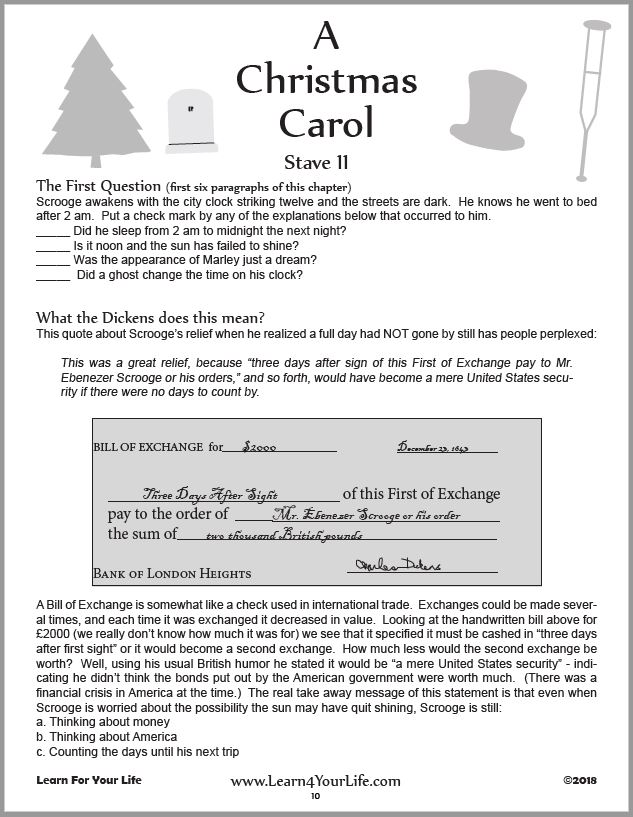
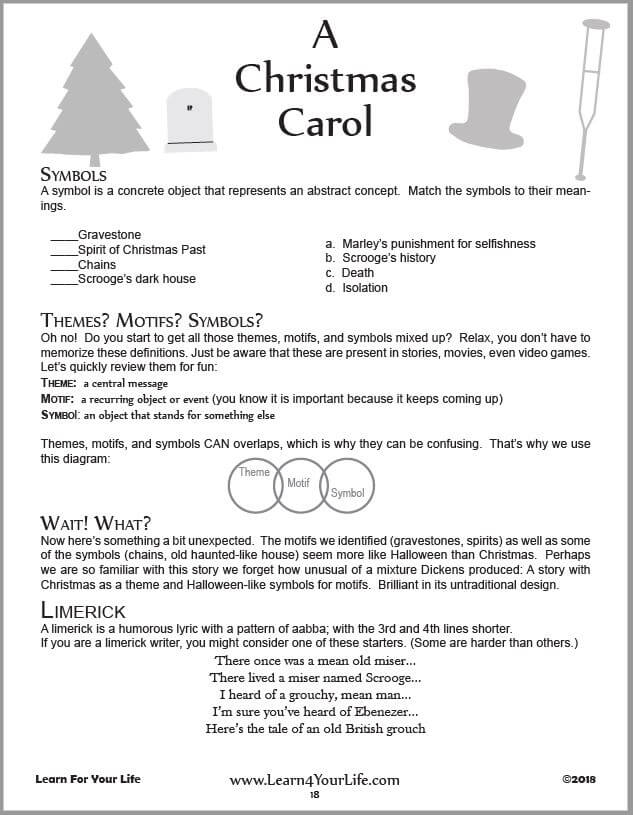
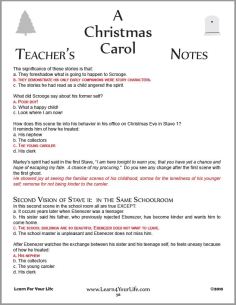
Student Guide AND Teacher's Answer Key Included
$2.99 Download - 84 pages
![]()
Our Christmas Carol Pages
Fun facts, great quotes, vocabulary words, and extra resources
About Our Site
Hands-On Learning



